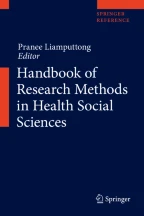Abstract
Content analysis (CA) has become one of the most common forms of data analysis, but it is often criticized for a lack of rigor and limited utility of its findings. We define CA and describe its general procedures and the three most frequently used forms of CA. Next, we review the history of CA leading up to its current popularity within diverse disciplines, including social science and healthcare disciplines. Its origins highlight concerns about researchers’ motivations underlying their interpretations of communications. In response, improved transparency and the application of CA in understanding underlying connotation in communications have furthered its evolution. CA can now be located on a continuum representing depth of interpretation, from surface description of phenomena to the uncovering of deeper meanings. We explore how CA may be used to uncover deeper underlying meanings and answer questions concerning how social relations, in connection with their context, affect outcomes such as individual behavior. By investigating deeper meanings, researchers can explore the core of the phenomenon and posit explanations of why the phenomenon is as it is. Finally, we argue that adopting an explicit philosophical orientation for inquiry will improve rigor and enhance practical utility of findings. We examine the philosophical and theoretical position of critical realism with CA. We then provide an example to illustrate the use of critical realism and outline the position’s key aspects to consider in future directions of CA.
Access this chapter
Tax calculation will be finalised at checkout
Purchases are for personal use only
Similar content being viewed by others
References
Allport GW, Faden JM. The psychology of newspapers: five tentative laws. Public Opin Q. 1940;4:687–703.
Bhaskar R. Chapter 2: Philosophy and scientific realism. In: Archer M, Bhaskar R, Collier A, Lawson T, Norrie A, editors. Critical realism: essential readings. New York: Routledge; 1998. p. 16–47.
Boniatti MM, Freidman G, Castilho RK, Vieira SRR, Fialkow L. Characteristics of chronically critically ill patients: comparing two definitions. Clinics. 2011;66:701–4.
Camhi SL, Mercado AF, Morrison RS, Platt DM, August GI, Nelson JE. Deciding in the dark: advance directives and continuation of treatment in chronic critical illness. Crit Care Med. 2009;37:919–25.
Cruickshank J. Positioning positivism, critical realism, and social constructionism in the health sciences: a philosophical orientation. Nurs Inq. 2012;19:71–82.
Easton G. Marketing: a critical realist approach. J Bus Res. 2002;55:103–9.
Elder-Vass D. The causal powers of social structures: emergence, structure, and agency. Cambridge, UK: Cambridge University Press; 2010.
Elo S, Kyngäs H. The qualitative content analysis process. J Adv Nurs. 2008;62:107–15.
George AL. Propaganda analysis: a study of inferences made from Nazi propaganda in World War II. Evanston: Row, Peterson; 1959.
Hsieh HF, Shannon SE. Three approaches to qualitative content analysis. Qual Health Res. 2005;15:1277–88.
Kellner D, Roderick R. Recent literature on critical theory. New German Crit. 1981;23:141–77.
Krippendorff K. Content analysis: an introduction to its methodology. 3rd ed. Thousand Oaks: Sage; 2013.
Leung D, Angus JE, Sinuff T, Bavly S, Rose L. Transitions to end-of-life care for patients with chronic critical illness: a meta-synthesis. Am J Hosp Palliat Med. 2016;34:729–36.
Maxwell JA, Mittapalli K. Realism as a stance for mixed method research. In: Tashakkori A, Teddlie C, editors. Handbook of mixed methods in social & behavioral research. 2nd ed. Thousand Oaks: Sage; 2010. p. 145–68.
Mayan MJ. Essentials of qualitative inquiry. Walnut Creek: Left Coast Press; 2009.
Miles MB, Huberman AM, Saldana J. Qualitative data analysis: a methods sourcebook. 3rd ed. Thousand Oaks: Sage; 2014.
Nairn S. A critical realist approach to knowledge: implications for evidence-based practice in and beyond nursing. Nurs Inq. 2012;19:6–17.
Pawson R, Greenhalgh T, Harvey G, Walshe K. Realist review-a new method of systematic review designed for complex policy interventions. J Health Serv Res Policy. 2005;10(Suppl 1):21–34.
Philosophical foundations: critical realism. In: Mingers J, editor. Realising systems: knowledge and action in management science. Boston: Springer; 2006. pp. 11–31. https://doi.org/10.1007/0-387-29841-X_2.
Porter S, O’Halloran P. The use and limitation of realistic evaluation as a tool for evidence- based practice: a critical realist perspective. Nurs Inq. 2012;19:18–28.
Sandelowski M. Whatever happened to qualitative description. Res Nurs Health. 2000;23:334–40.
Sandelowski M. Using qualitative research. Qual Health Res. 2004;14:1366–86.
Sandelowski M. What’s in a name? Qualitative description revisited. Res Nurs Health. 2010;33:77–84.
Sinuff T, Giacomini M, Shaw R, Swinton M, Cook DJ. “Living with dying”: the evolution of family members’ experience of mechanical ventilation. Crit Care Med. 2009;37:154–8.
Tong A, Fleming K, McInnes E, Oliver S, Craig J. Enhancing transparency in reporting the synthesis of qualitative research: ENTREQ. BMC Med Res Methodol. 2012;12:181. Retrieved from https://bmcmedresmethodol.biomedcentral.com/track/pdf/10.1186/1471-2288-12-181?site=bmcmedresmethodol.biomedcentral.com.
White MD, Marsh EE. Content analysis: a flexible methodology. Libr Trends. 2006;55:22–45.
Wilson V. Research methods: content analysis. Evid Based Libr Inf Pract. 2016;6:177–9. Retrieved from https://journals.library.ualberta.ca/eblip/index.php/EBLIP/article/view/12180/13124.
Acknowledgement
Editorial services of Research Maven Consulting Services (http://www.researchmaven.ca) were enlisted to support substantive and copyediting of the manuscript.
Author information
Authors and Affiliations
Corresponding author
Editor information
Editors and Affiliations
Rights and permissions
Copyright information
© 2019 Springer Nature Singapore Pte Ltd.
About this entry
Cite this entry
Leung, D.Y., Chung, B.P.M. (2019). Content Analysis: Using Critical Realism to Extend Its Utility. In: Liamputtong, P. (eds) Handbook of Research Methods in Health Social Sciences. Springer, Singapore. https://doi.org/10.1007/978-981-10-5251-4_102
Download citation
DOI: https://doi.org/10.1007/978-981-10-5251-4_102
Published:
Publisher Name: Springer, Singapore
Print ISBN: 978-981-10-5250-7
Online ISBN: 978-981-10-5251-4
eBook Packages: Social SciencesReference Module Humanities and Social SciencesReference Module Business, Economics and Social Sciences
